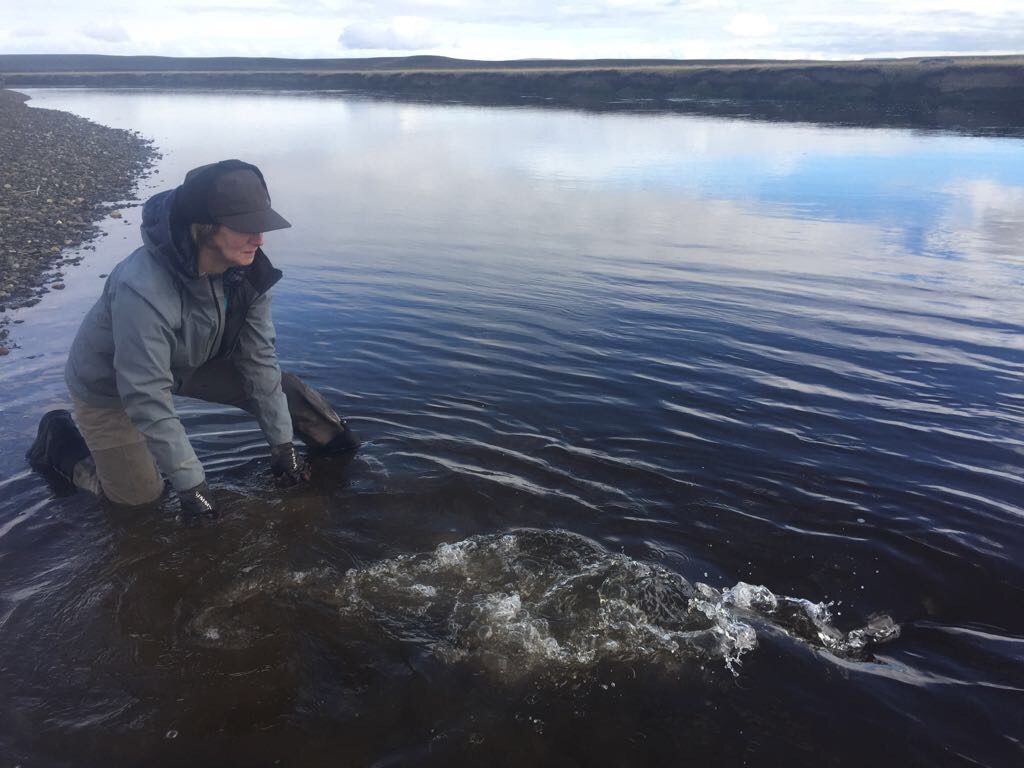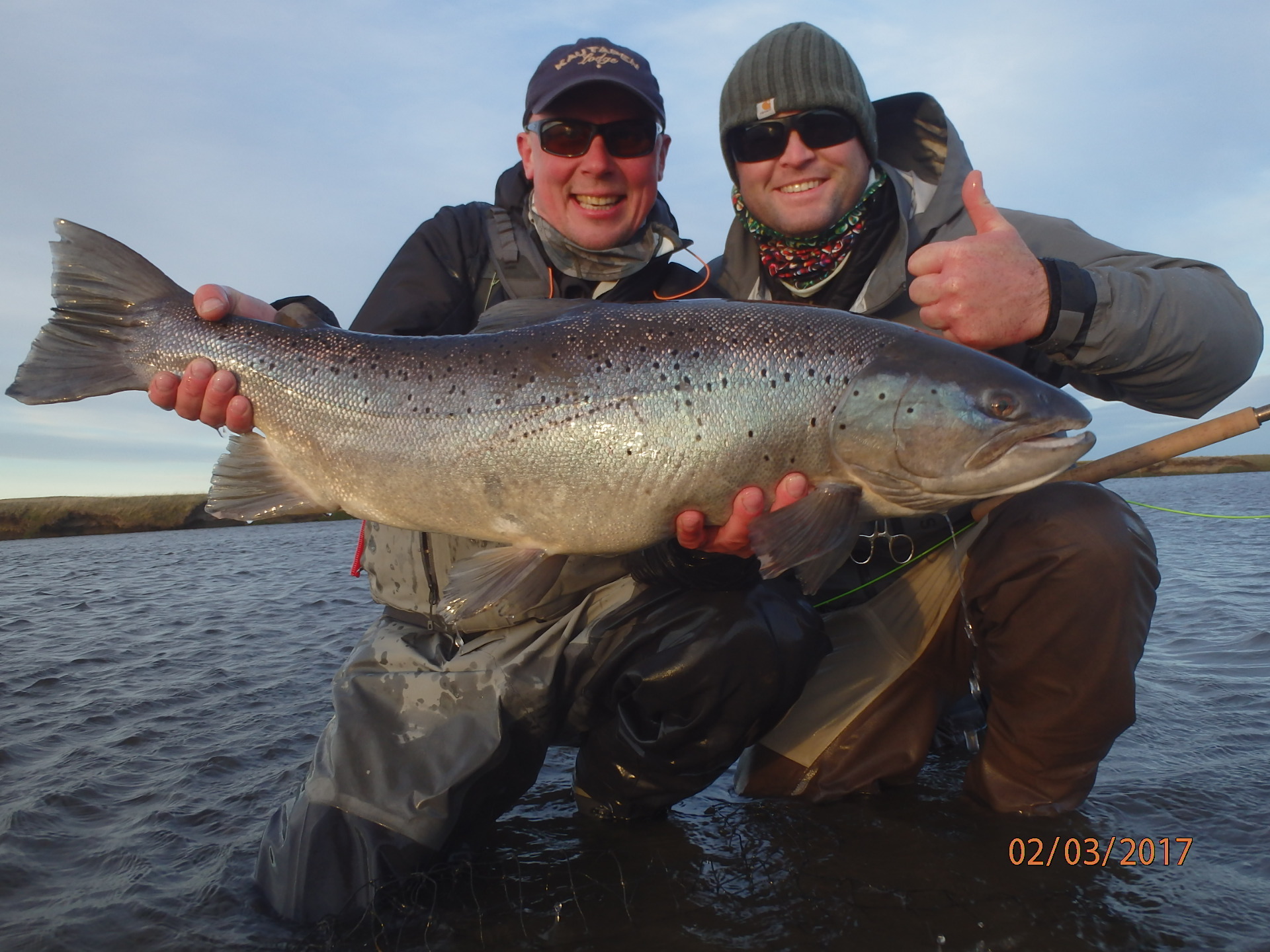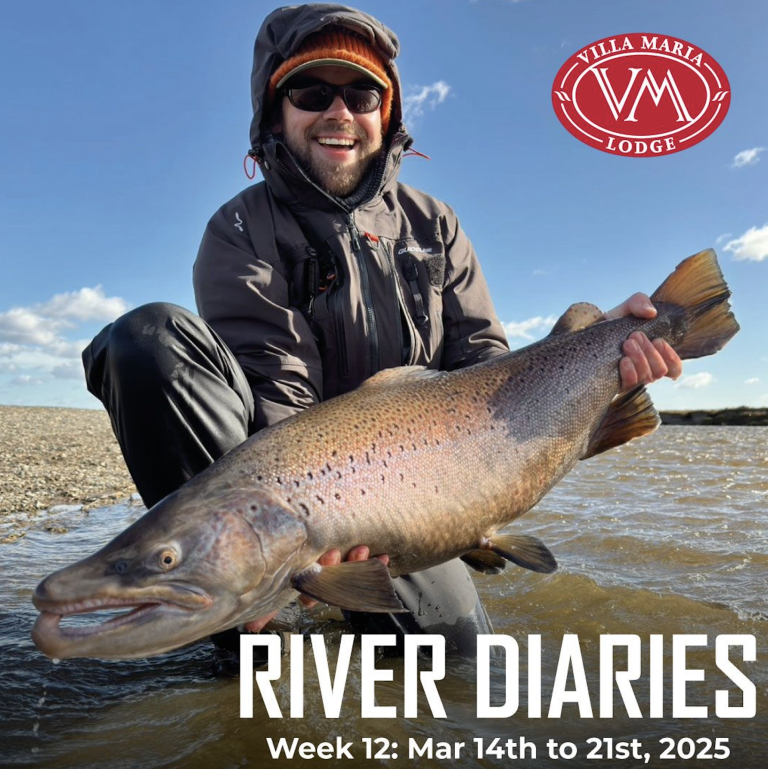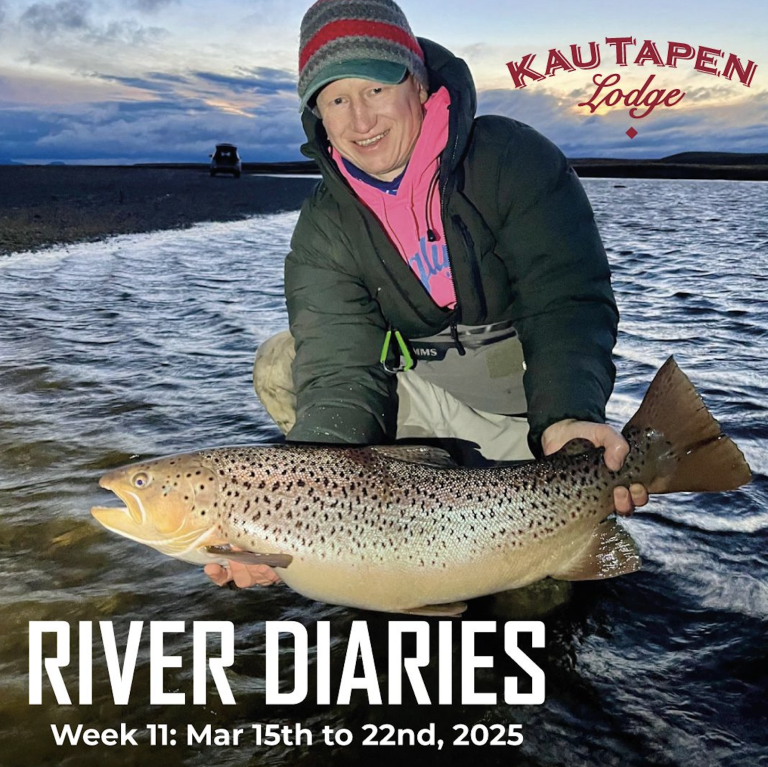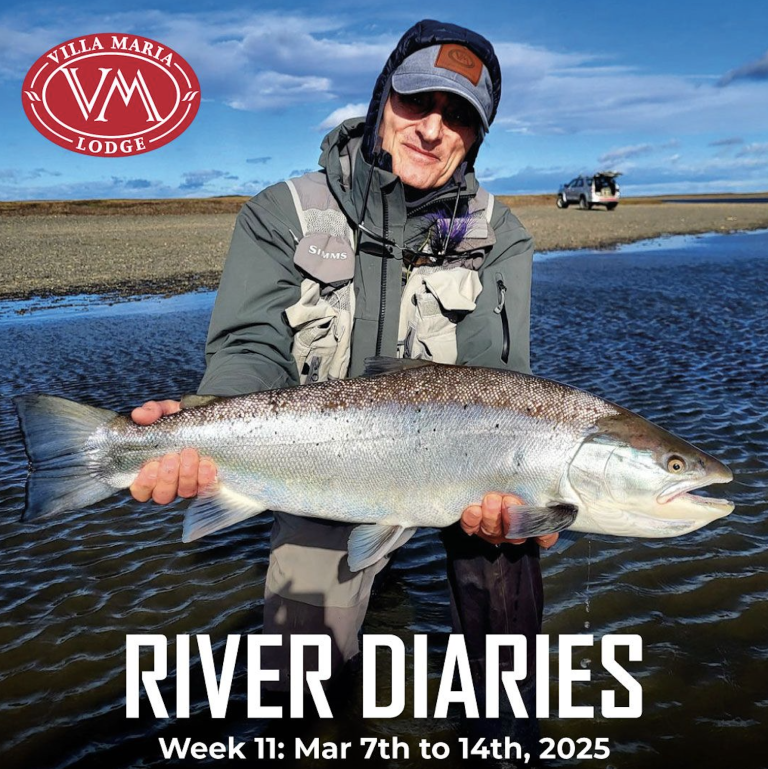Kau Tapen Lodge: Year End Review
Sitting down to write the final report of the season, what first comes to mind are the beaming faces of ecstatic clients and the furious fights off all the sea-run browns we hooked and landed. There were a lot of those moments to distill, considering that the 2017 season was officially the best we’ve seen in the past decade. What’s easier to forget are the more challenging times. But success—no matter how great—doesn’t come without its struggles.
The season started in January, with some atypical conditions. Water levels were extremely low and water clarity was the equivalent of high-end crystal—without a spec of turbidity. These factors did not deter the fish from entering the system. Quite the opposite, actually. But they did force us to be better guides, working with our passionate clients to find the right formulas for consistently fooling wary fish. At times that meant using long, supple leaders, Scandi lines with intermediate tips, and small nymphs.
We faced similar conditions through the month of January and into the first two weeks of February. And despite some great results, we were all praying for kalue (“rain” in the native Ona tongue), because we knew that by mid-season fresh fish would require more water to reach the upstream pools of the Rio Grande. Finally kalue came in the form of twelve days of short but intense rain events. The micro-storms watered our Kau Tapen pastures and the cordilleran zones. Additionally, all the basin tributaries swelled, which caused the Rio Grande to fill out.
With the rain came the usual muddy water scenarios. We switched from light setups to our heavier Skagit-style rigs and commenced our deep-dredging program. The river felt the surge of two significant floods during this period. The first pulse brought it up eight inches; the second resulted in a two-foot spike. And as the river increased in size our catch rates continued rising as well, with more fresh and a few darker fish coming to hand.
By March, high and fast flows had become the norm. And full-sinking lines, T14-17 tips, and big flies were the everyday mainstays. It was stretch on the Rio Grande we’ll never forget. Let’s just call it: The Month of 20-Pounders. Fishing on the Menendez was unreal, too. This technical, intimate tributary produced some of our best days of the season. And the fishing there was a highlight for many of our new and returning guests.
Walking the gravel banks along the Grande these past couple of days, already without clients, fishing solo, it’s fun to think back on the experiences and the truly mind-blowing numbers that help illustrate them. Overall, 1,342 fish were landed and 629 fish were lost during the fight. The average weight of caught fish was 9.2 pounds—extraordinary considering that a 4 -pound trout is a “trophy” in most other parts of the world. Ratcheting up that average were the 47 fish that clients tallied weighing between 20 and 26 pounds. And on the next rung down, we saw 275 sea-run browns weighing between 15 and 19 pounds.
Congratulations to everyone we had the pleasure of guiding this summer. You all contributed immensely to this special season at Kau Tapen Lodge. I hope to see you again next summer and to continue building the history of the best fishing lodge ever to grace the Rio Grande.
I’m already looking forward to making a return next season, to see some familiar faces and get to know some new ones.
TIGHTLINES.
—Gastón Guglielminetti
Head Guide, Kau Tapen lodge

